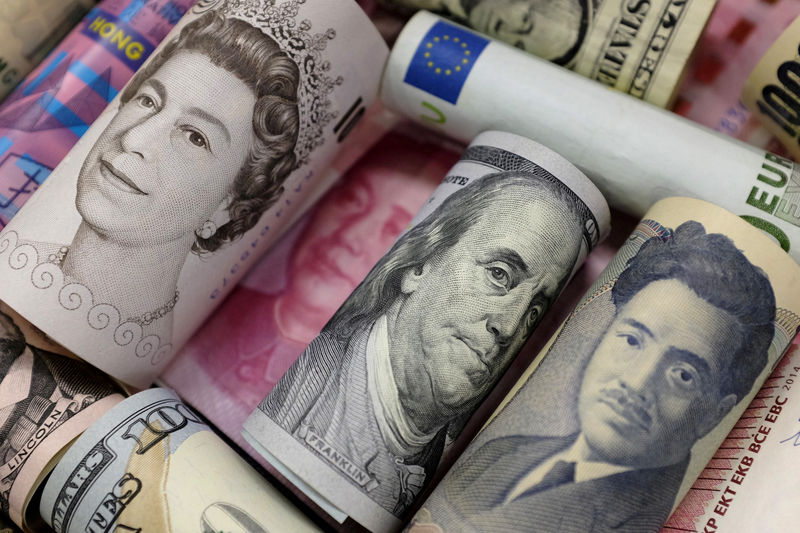By Jemima Kelly
LONDON (Reuters) - The dollar surged to its highest levels in 14 years on Thursday, after the Federal Reserve hinted that U.S. interest rates could rise faster in 2017 than investors had been anticipating, and hiked rates for the first time in a year.
The 25-basis point increase in the central bank's benchmark interest rate had been widely expected by financial markets; it was its signal that rates were likely to rise three times in 2017 - up from twice at the Fed's September meeting - that investors latched onto and drove the greenback higher. http://tmsnrt.rs/2gsUVwB
The Fed's policy meeting was the first since the U.S. election victory of Donald Trump, who investors expect to drive up inflation and boost growth with a program of huge fiscal expansion.
The dollar jumped after the Fed statement late on Wednesday and built on those gains on Thursday, climbing as much as 0.8 percent against a basket of major peers to hit 102.62 (DXY), its highest since early 2003, as U.S. Treasury yields surged.
At least five of 17 Fed policymakers appeared to have boosted their interest rate outlook since September, according to the new "dot plot" of rate projections. But not all traders and analysts viewed the Fed's statement as hawkish.
"The macroeconomic forecast is unchanged...and the dots have shifted only very slightly – the median dots went up by 25 basis points but the average only went up 6 basis points," said UBS Wealth Management's head of currency strategy, Thomas Flury, in Zurich.
"Yellen pointed out that uncertainties are exceptionally high, and we know that when uncertainties are high the Fed is more moderate than hawkish. So from the Fed's perspective the communication was fairly neutral."
Against the yen, the dollar jumped as much as 0.7 percent on the day to hit 117.87 <JPY=>, its strongest since February.
Analysts said Japan might now step up verbal warnings against excessive yen declines versus the dollar.
The dollar is on track for easily its strongest quarter against the Japanese currency in over 20 years, after a more than 16 percent climb since the start of October.
"I doubt that Fed can actually raise interest rates three times next year. Last year they planned to have four rate hikes, but ended up raising only once," said Daisuke Karakama, chief market economist at Mizuho Bank in Tokyo.
The allure of higher U.S. yields took a toll on emerging Asian currencies, with the Chinese yuan
The euro hit a 21-month low of $1.0468, close to its 2015 low of $1.0457 - the weakest since 2003.
The Norwegian crown surged 0.6 percent to 8.9715 crowns per euro (EURNOK=D4) after the country's central bank marginally raised its prediction for borrowing costs in 2019.
For Reuters new Live Markets blog on European and UK stock markets see reuters://realtime/verb=Open/url=http://emea1.apps.cp.extranet.thomsonreuters.biz/cms/?pageId=livemarkets
